Football stadiums are primarily designed to make money. That may seem like a cynical point of view, but their ultimate function is to effectively monetise supporters who want to watch a game of footy.
That most directly happens with the action of allowing entry to those with a ticket, and preventing entry for those who don't. But as football has evolved into a multi-billion pound industry, the money-making process also involves corporate boxes and function rooms, sponsorship opportunities and upselling produce to the average supporter such as merchandise sales and food and drink offerings.
Nonetheless, there is an advantage to ensuring a stadium goes beyond its basic functionality. Creating the right conditions for an electric atmosphere can have a direct correlation with performances on the pitch, while efforts to increase visual appeal can make the stadium something of a talking point.
With that in mind, we have listed the most unique stadiums in football history, famed for their quirky features and bespoke designs.
Ranking Factors
Atmosphere - not just by what is conjured up by the stands, but also by a stadium's surroundings.
Legacy - what memories the stadium has created and what esteem is held in by fans
Claim to uniqueness - what features in the stadiums are unparalleled with anything else
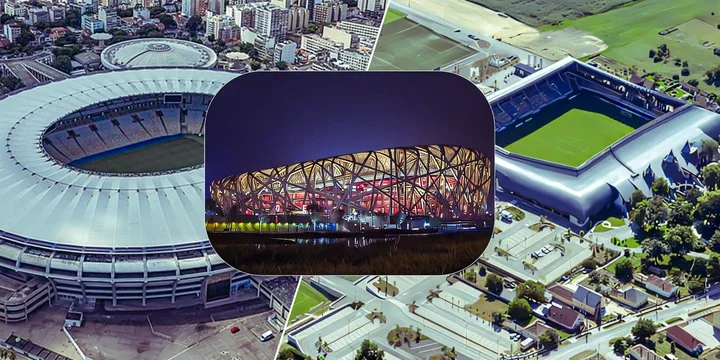
Related
From the Camp Nou to the iconic Maracana in Brazil, the most beautiful stadiums in football history have been ranked.
10 Eidi Stadium
Faroe Islands
Less of a stadium and more of a ground, the Eidi had a spectacular setting, nestled between the Atlantic Ocean and a steep rock face. The football played there is somewhat exposed to the elements, with no doubt many footballs being lost to the sea.
It used to be the home of two-time Faroe Islands Premier League winners EB/Streymur, who Manchester City faced in a two-legged UEFA Cup tie. Sadly, it was in 2008, a few years after the Faroe Islands club had moved to a new ground further inland. The old football pitch remains there in an incredible setting.
9 Estadio Municipal de Braga
SC Braga, Portugal
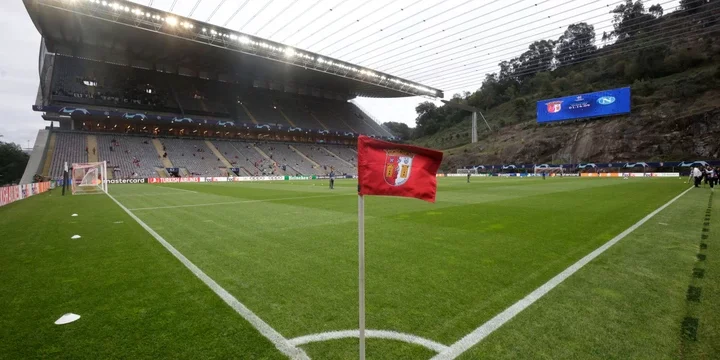
The home of Sporting Clube de Braga in Portugal, the thirty-thousand seater stadium was built for Euro 2004 and was effectively carved into the side of the Monte do Castro quarry that overlooks Braga, the scale of which shows how nature hulks over us all, with players rushing towards that end looking so tiny in comparison.
In Euro 2004, two goals from Ruud van Nistelrooy helped the Netherlands to a 3-0 win over Latvia in the iconic venue. Braga. too, have had some good days at the stadium. In 2010, they beat Arsene Wenger's Arsenal 2-0 with both goals scored by Brazilian forward Matheus.
8 Griffin Park
Brentford, England

Now established in the Premier League in their new Community Stadium - one of the least intimidating grounds in British football - Griffin Park was Brentford's previous home for 120 years, with the unique characteristic of having a pub on each corner of the ground. It was named in 1904 after the nearby pub, The Griffin, which, along with The New Inn, The Princess Royal and The Brook, became important meeting places for Brentford supporters.
As well as being where Thomas Frank began his reign at the club before taking them up to the Premier League, Griffin Park has played host to a variety of other long forgotten matches, like Italy's 9-0 win over the USA in the London 1948 Olympics.
7 Hernando Siles Stadium
Bolivia
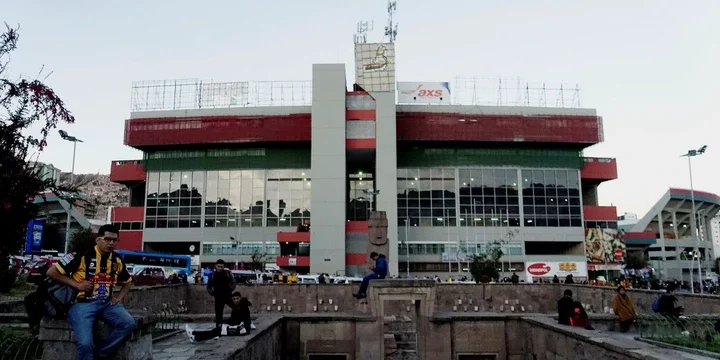
While there are many stadiums at high altitude, Bolivia's Hernando Siles Stadium probably lays claim to having inspired some of the best results, especially for the Bolivian national team. It saw the national team defeat Brazil in the qualifiers for the 1994 World Cup, a tournament they would go on to win.
Brazil had Cafu among their starting line up that day. Bolivia beat Brazil at the same ground in 2009 and 2001, where Cafu again, along with Rivaldo, were recipients of another famous Bolivia win at altitude. The 1993 victory at the Hernando Siles was Brazil's first ever defeat in a World Cup qualifier.
6 Sapporo Dome
Hokkaido Consadole Sapporo, Japan

For English football fans, the Sapporo Dome in Japan will be memorable as the stadium where David Beckham scored the winning goal against Argentina from the penalty spot in the 2002 World Cup in Japan and South Korea - redemption for his infamous red card four years earlier.
Created for the 2002 World Cup, the stadium has a very unusual feature, in that it switches from two different playing surfaces. It hosts baseball games played on an artificial turf, but for football matches, a grass pitch is slid into place in front of spectators.
While there are other stadiums in the world of football that have such a feature, like the Veltins Arena in Germany, this stadium has not a retractable roof, but a fixed one.
5 Pontiac Silverdome
Detroit Express, USA
If it wasn't enough to have been the venue for Eric Wynaldo's stunning free kick for the USA in the 1994 World Cup, the Pontiac Silverdome in Michigan also had a fabric fibre glass roof which was held up by air pressure.
Sadly, the venue fell victim to the harsh, cold Michigan climate. By 2013, a particularly heavy snowfall led part of the stadium's then 38-year-old roof to collapse. By 2017, it was decided it would be demolished.
Going back to 1975 when it first opened, with its translucent and inflatable roof, it was hailed as a modern phenomenon. Even though it's now gone, it was very much loved at the time.
4 Timsah Arena
Bursaspor, Turkey
Seen from footage from a drone, Bursaspor's Timsah Arena is simply stunning, with a design that has the stadium encased in the clutches of a giant green crocodile. The rendering of such at a sports ground is unparalleled anywhere in the world.
The crocodile's mouth reaches a height of 43 metres. To provide supporters with added drama, this is the mouth they walk into when they enter the stadium. On matchdays, the teeth and eyes of the beast light up.
Building and construction of the ground was completed in 2015, with the stadium having a capacity of 43,000. It provides a unique stadium experience.
3 Wembley
England
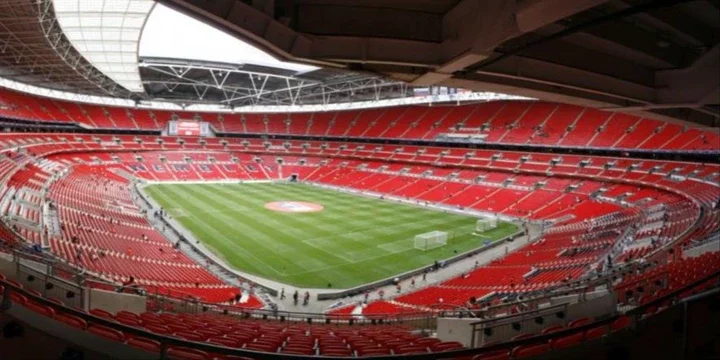
Perhaps for some, Wembley is too much of a mainstream choice as the most famous football ground of all time, yet the stadium has several unique features. The first being the fact that it has 2,618 toilets, more than any other venue in the world.
Whereas the old stadium had the famous twin towers, the new Wembley has the iconic arch, which is the world's longest single span roof support structure.
These are often overlooked facts against the backdrop of big games it has hosted, which includes the 2013 and 2024 Champions League final, won by Bayern Munich and Real Madrid respectively, as well as the final of Euro 2020 in which Italy beat England on penalties.

From the iconic Upton Park to the world famous Anfield, here are the most intimidating stadiums in British football history.
2 Olympiastadion
Munich, Germany
Built as the stadium for the Munich 1972 Olympics, the Olympiastadion became very familiar in world football for being the home of Bayern Munich. Featuring what can only be described as a lightweight tent construction, it offers an unusual, yet charming canopy-like vantage point to watch football from.
The architectural inspiration was to make the stadium look akin to the skyline of the Alps. This all combines to give the stadium an incredibly modern look. It was, of course, the venue for West Germany when they came back from a goal down to beat the Netherlands to win the 1974 World Cup.
1 La Bombonera
Boca Juniors, Argentina
Officially named the Alberto Jose Armando Stadium, but more widely known as La Bombonera - which translates as the chocolate box, given the number of tiered boxed stands - the stadium is a weird mix of the Nou Camp and Kenilworth Road and all the better for it.
The three-tired yellow and blue stands that surround three sides of the ground do look very much reminiscent of the Nou Camp back in 2008. Yet the stand running alongside one flank is far thinner and mostly catered for by corporate boxes, albeit one that is often plastered in blue and yellow flags. What cannot be denied is the stadium's incredible atmosphere on Boca Juniors match days.
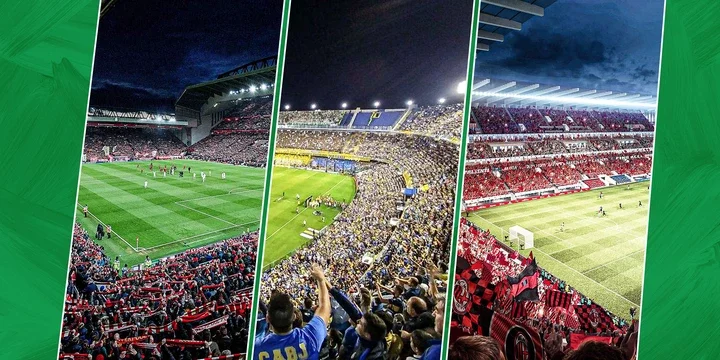
Crowds can have a huge impact in football and help to drive their team towards victory. Here are the best stadium atmospheres in world football.

![10 Most Expensive Stadiums in Football History [Ranked] 10 Most Expensive Stadiums in Football History [Ranked]](https://static.netnaija.com/i/r9KYzQZG7q6.webp)


![10 Laziest Players in Premier League History [Ranked] 10 Laziest Players in Premier League History [Ranked]](https://static.netnaija.com/i/QJNjZOrDNrL.webp)












Comments